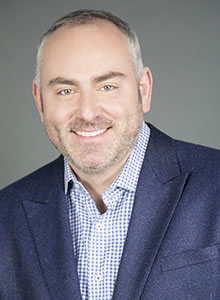Why Your Surgeon Needs Experience With Gender-Affirming Breast Augmentation
 It's official: According to a new report released by the American Society of Plastic Surgeons (ASPS), Breast Augmentation is the #1 cosmetic surgical procedure performed in the U.S., with a 4% increase in 2018. With over 8000 ASPS members, plus osteopathic and cosmetic surgeons offering Breast Augmentation, there are literally thousands of surgeons to choose from.
It's official: According to a new report released by the American Society of Plastic Surgeons (ASPS), Breast Augmentation is the #1 cosmetic surgical procedure performed in the U.S., with a 4% increase in 2018. With over 8000 ASPS members, plus osteopathic and cosmetic surgeons offering Breast Augmentation, there are literally thousands of surgeons to choose from.
But as the saying goes, buyer beware.
Recent studies on Breast Augmentation for trans feminine patients stress that there are significant differences between trans and cis chest measurements that have implications concerning breast implant selection and surgical approach. For those looking for a Breast Augmentation surgeon, this underlies the importance of selecting one who has experience specifically with gender-affirming Breast Augmentation.
Choosing a Breast Implant Size
 Although there are similarities between trans and cis gender Breast Augmentation, there are also differences that warrant investigation. In the largest study on Breast Augmentation in trans women published over the last 15 years [1], researchers from Switzerland and Germany described their experience with chest feminizing surgical techniques and breast implant characteristics over the last 21 years. One of the interesting things they found was that the implant size used during 2011-2016 was significantly increased as compared to the implant size reported during 1995-1999 and 2000-2004. Simultaneously, revision rates dropped significantly over time (52.9% during 1995-1999 as compared to 6.9% during 2011-2016). Request for larger implants was the most common indication for revision.
Although there are similarities between trans and cis gender Breast Augmentation, there are also differences that warrant investigation. In the largest study on Breast Augmentation in trans women published over the last 15 years [1], researchers from Switzerland and Germany described their experience with chest feminizing surgical techniques and breast implant characteristics over the last 21 years. One of the interesting things they found was that the implant size used during 2011-2016 was significantly increased as compared to the implant size reported during 1995-1999 and 2000-2004. Simultaneously, revision rates dropped significantly over time (52.9% during 1995-1999 as compared to 6.9% during 2011-2016). Request for larger implants was the most common indication for revision.
According to Dr. Eric Bensimon, a plastic surgeon specializing in transgender surgery in Montreal, Canada, this matches up with what he has seen in his practice. "In general, many transgender patients will require larger size implants than cis women," he commented on the study [2]. "This is because they often present with wider chest circumference and therefore require bigger implants to reach their desired cup size. Most of my trans patients aim for a C cup or higher."
Using a larger implant for trans patients is further corroborated in a new study published in March, 2019 [3]:
"If the clinician considers that a typical trans patient is likely to be a tall endomorph patient with elevated BMI and larger [breast width] on clinical examination, it may be prudent to select a larger implant that accommodates the trans-verse chest dimensions. Selection of the appropriate implant under these circumstances will allow the surgeon to achieve feminine proportions with medial fullness and perhaps more cleavage." — Dr. Jens Berli et al.
Breast Shape Considerations
 "The goal of Breast Augmentation surgery isn't just large breasts but rather an overall female shape to the breasts," says Dr. Dustin Reid, a plastic surgeon in Austin, Texas. "In addition to the placement of breast implants, this usually includes lowering of the inframammary fold and enhancement of the areola. It's important to find a surgeon with expertise and experience in transgender surgery to optimize the patient experience and outcome."
"The goal of Breast Augmentation surgery isn't just large breasts but rather an overall female shape to the breasts," says Dr. Dustin Reid, a plastic surgeon in Austin, Texas. "In addition to the placement of breast implants, this usually includes lowering of the inframammary fold and enhancement of the areola. It's important to find a surgeon with expertise and experience in transgender surgery to optimize the patient experience and outcome."
The inframammary fold (IMF) is the place where the bottom of the breast and the chest meet. Manipulation of the IMF is often critical in trans feminine patients for aligning the breast implant with the nipple-areola complex (NAC). "I find the most difficult challenge in trans women patients is the short distance between the nipple-areola complex and the inframammary fold," said Dr. Bensimon. "The constricted narrow base can be as short as 2cm in some patients. Hence, we are faced with a wide base and short height that warrants a great deal of manipulation of the inframammary fold to be able to place the implant meridian at the level of the nipple, which is the ultimate goal for the optimal aesthetic result."
Researchers from the latest study agree that substantially lowering the inframammary fold is needed in most trans-female patients.
Dr. Bensimon mostly uses round implants with high projection and lower diameter. "I think that utilizing a low-projecting implant could result in a high-riding implant because the nipple will be positioned in the inferior half of the breast mound, especially if one is reluctant to significantly lower the inframammary fold. High-projecting implants allow us to minimize the manipulation of the inframammary fold to center the implant behind the nipple and achieve a high satisfaction rate."
While estrogen therapy can increase breast volume, many trans people still seek to enhance the feminine shape and contour of their breasts. There are significant anatomical differences that need to be considered when planning Breast Augmentation in a trans feminine patient. An experienced surgeon will be able to guide you through breast implant selection and recommend a surgical approach based on specific knowledge of these differences.
Silicone Breast Implant Safety Concerns
Textured silicone implants were used exclusively in the Swiss/German study however sales of Allergan textured silicone implants in Europe were stopped in December 2018 over health concerns. In April 2019, Health Canada informed Allergan of its intent to suspend sales in Canada and they followed through with a Canada-wide ban a month later.
While these implants are still on the market in the U.S., researchers in the recent study say they are not routinely offered unless specifically requested: "On the other end of the spectrum is the ectomorph body type where ideally a textured implant would assist in providing the most natural chest shape. In the setting of uncertainty around breast implant–associated anaplastic large cell lymphoma, it is the senior author's practice to reserve textured implants for patients who independently ask for this implant, are of the ectomorph type and have enough health literacy to understand the severe risks associated with these implants."
UPDATE, July 24, 2019: Allergan issued a worldwide recall of Biocell textured breast implants and tissue expanders that have been linked to a rare cancer. The move came after the US Food and Drug Administration requested the manufacturer voluntarily recall the products.
UPDATE, April 2020: In Dr. Thomas Satterwhite's experience, there is an absence of breast implant illness presentation in transgender patients. In more than 200 transfemale
patients who have undergone Breast Augmentation
in the past 5 years, 70% of whom received textured implants, none have mentioned symptoms
related to breast implant illness. Source: Staying on Top of Breast Implant Illness: An Analysis of Chest Feminization Experiences.
References
1. Fakin RM, Zimmermann S, Kaye K, Lunger L, Weinforth G, Giovanoli P. Long-term outcomes in breast augmentation in trans-women: a 20-year experience. Aesthetic Surg J. 2018; doi: 10.1093/asj/sjy143.
2. Eric Bensimon. Commentary on: Long-Term Outcomes in Breast Augmentation in Trans-Women: A 20-Year Experience. Aesthetic Surg J. 2018, 1–2; doi: 10.1093/asj/sjy200
3. Nauta, Allison C., Baltrusch, Kyle M., Heston, Aaron L., Narayan, Sasha K., Gunther, Sven, Esmonde, Nick O., Blume, Kylie S., Mueller, Reid V., Hansen, Juliana E., Berli, Jens Urs. Differences in Chest Measurements between the Cis-female and Trans-female Chest Exposed to Estrogen and Its Implications for Breast Augmentation. [FULL TEXT] Plastic and Reconstructive Surgery – Global Open: March 2019 - Volume 7 - Issue 3 - p e2167, doi: 10.1097/GOX.0000000000002167
Last updated: 09/28/22